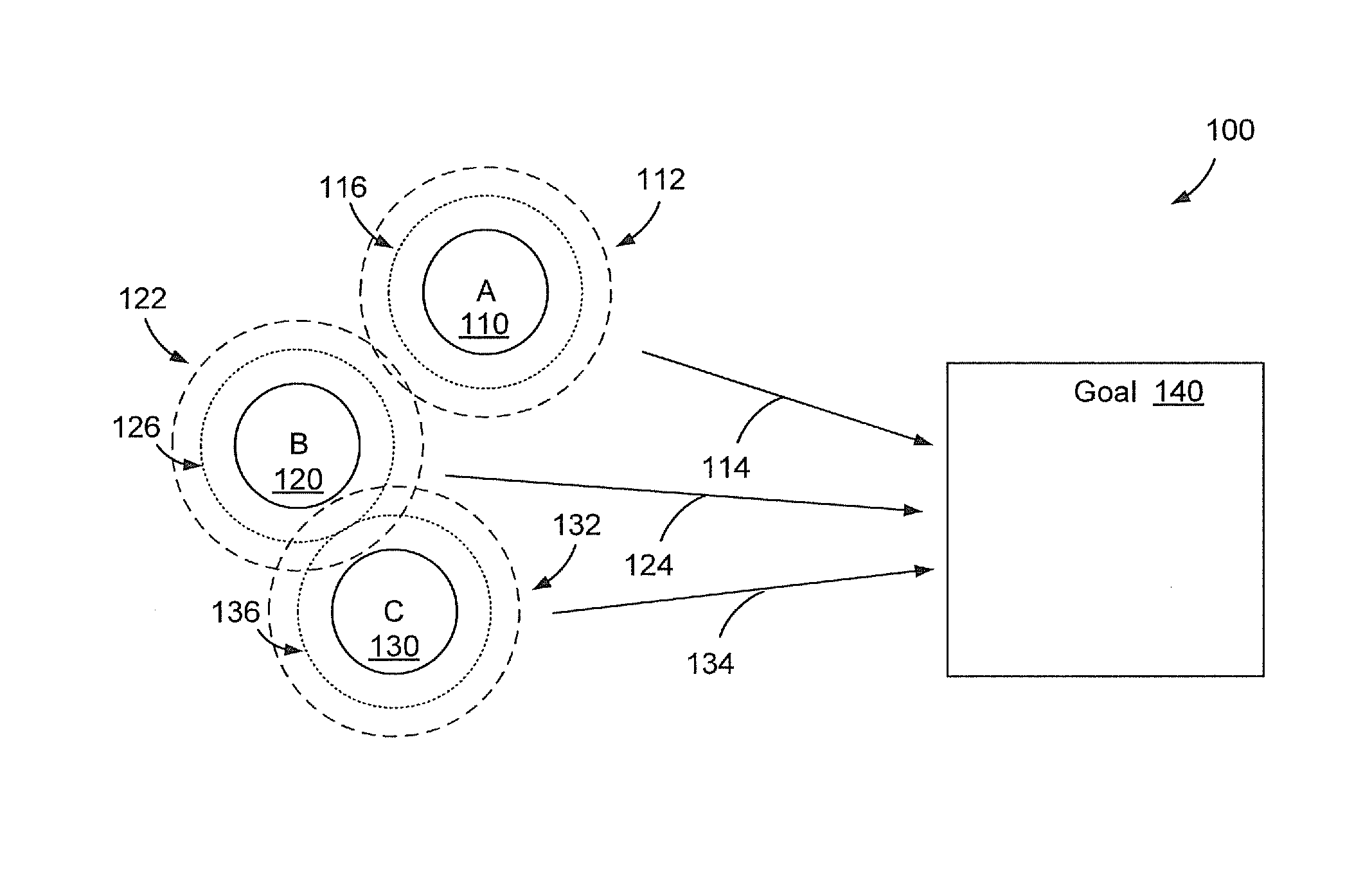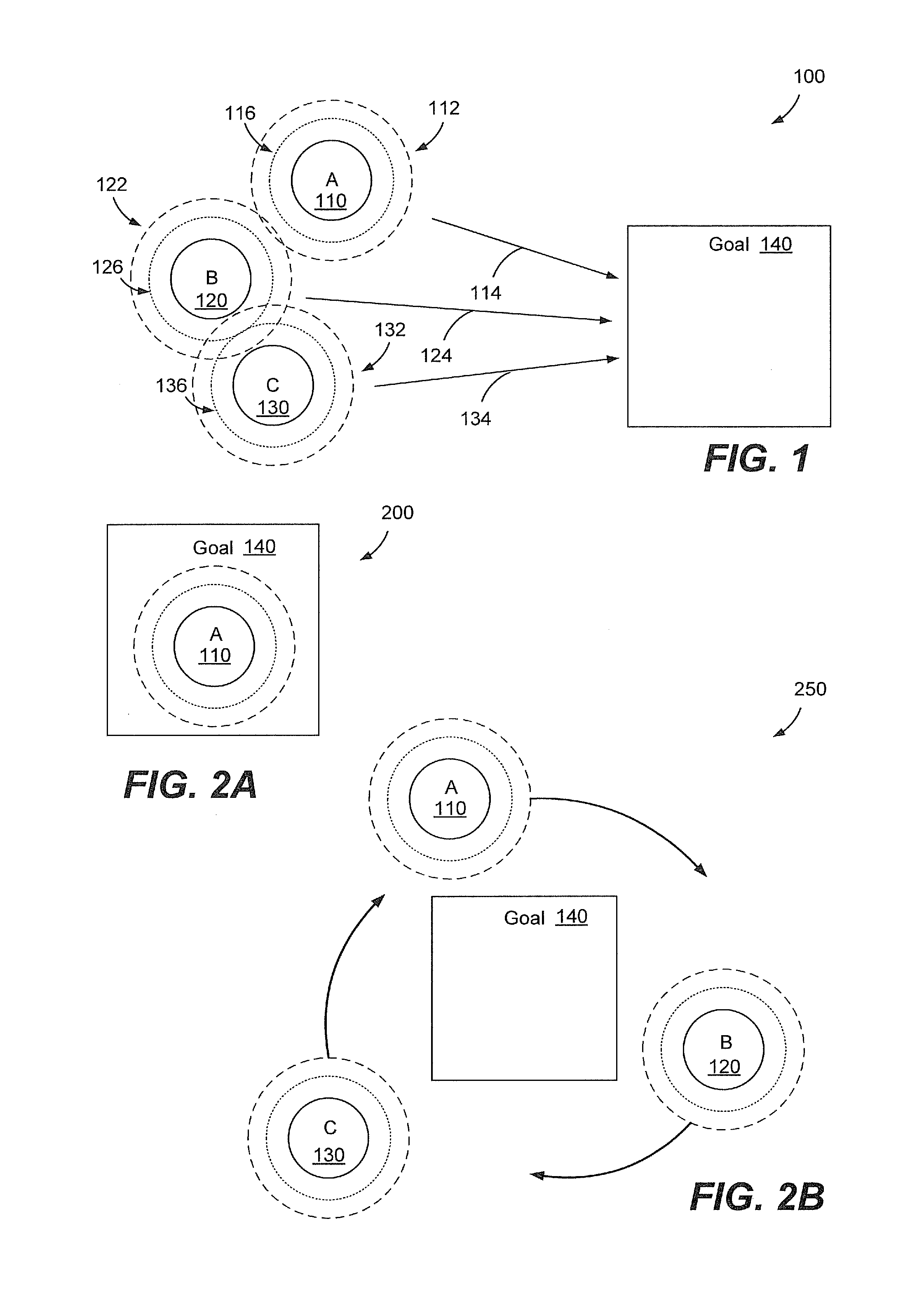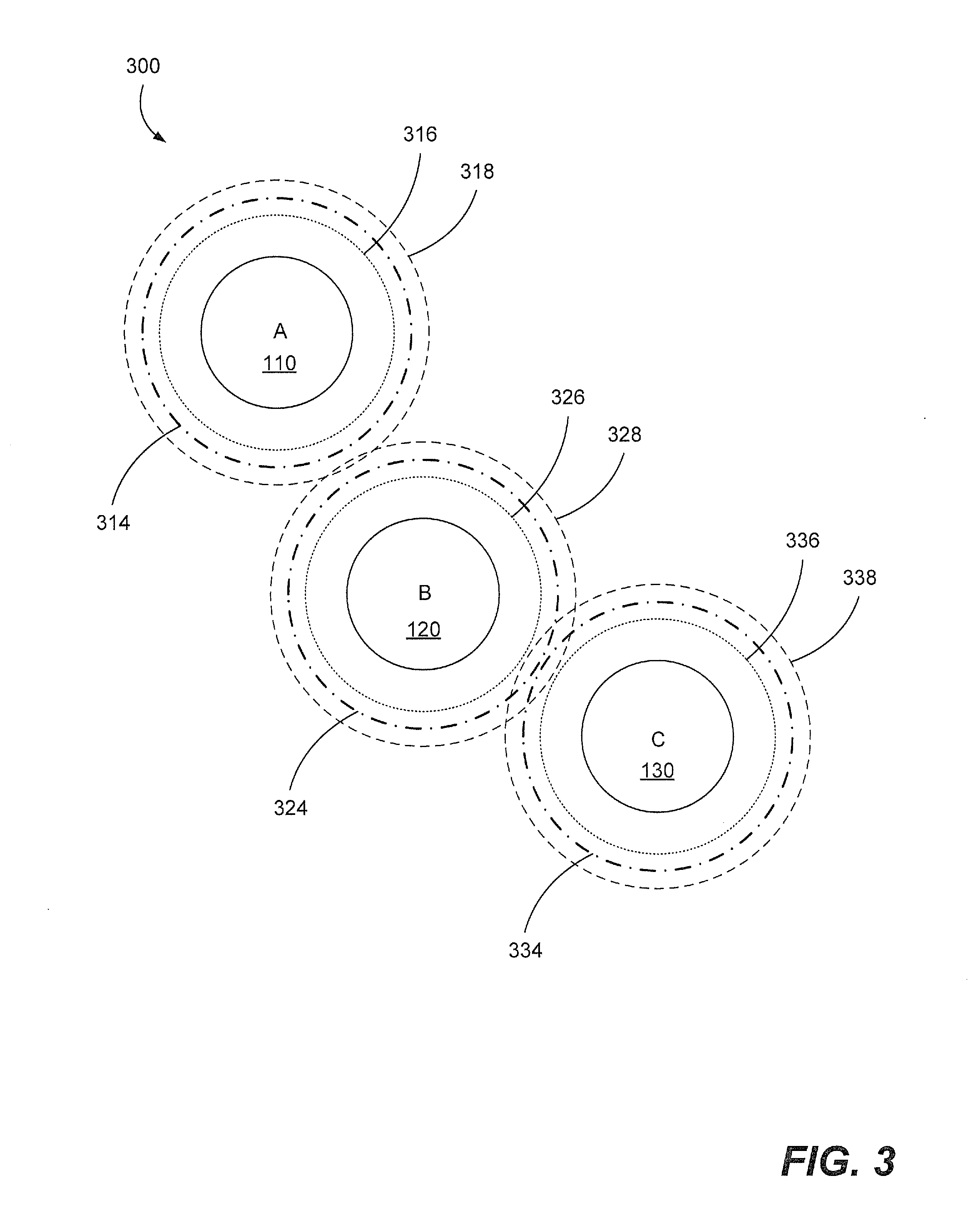System and method for demand driven network topology management
a topology management and demand technology, applied in the direction of vehicle position/course/altitude control, process and machine control, instruments, etc., can solve the problems of complex coordination task of landing the aircraft, unworkable, unexpected events, etc., to facilitate network communication, facilitate network operation, and facilitate network communication.
- Summary
- Abstract
- Description
- Claims
- Application Information
AI Technical Summary
Benefits of technology
Problems solved by technology
Method used
Image
Examples
Embodiment Construction
[0041]According to illustrative embodiments of the present disclosure, a plurality of agents or nodes participating in a shared operation may be cooperatively moved or placed so as to satisfy specified constraints through the use of potential field methods. Potential field methods are used to model physical / virtual gravitational or magnetic fields by depicting how an object is affected by a plurality of forces to which the object is subjected. Potential fields may be created to model desired forces imputed to the nodes. For example, instead of using a potential field to model a magnetic force between two nodes, a potential field may be used to model a desired repulsion and a desired attraction to maintain the two nodes at a desirable communication distance where the nodes are neither too close together as to cause communication interference nor too far apart so that the nodes are beyond communication range of each other. By applying potential fields to model various constraints, suc...
PUM
 Login to View More
Login to View More Abstract
Description
Claims
Application Information
 Login to View More
Login to View More - R&D
- Intellectual Property
- Life Sciences
- Materials
- Tech Scout
- Unparalleled Data Quality
- Higher Quality Content
- 60% Fewer Hallucinations
Browse by: Latest US Patents, China's latest patents, Technical Efficacy Thesaurus, Application Domain, Technology Topic, Popular Technical Reports.
© 2025 PatSnap. All rights reserved.Legal|Privacy policy|Modern Slavery Act Transparency Statement|Sitemap|About US| Contact US: help@patsnap.com



